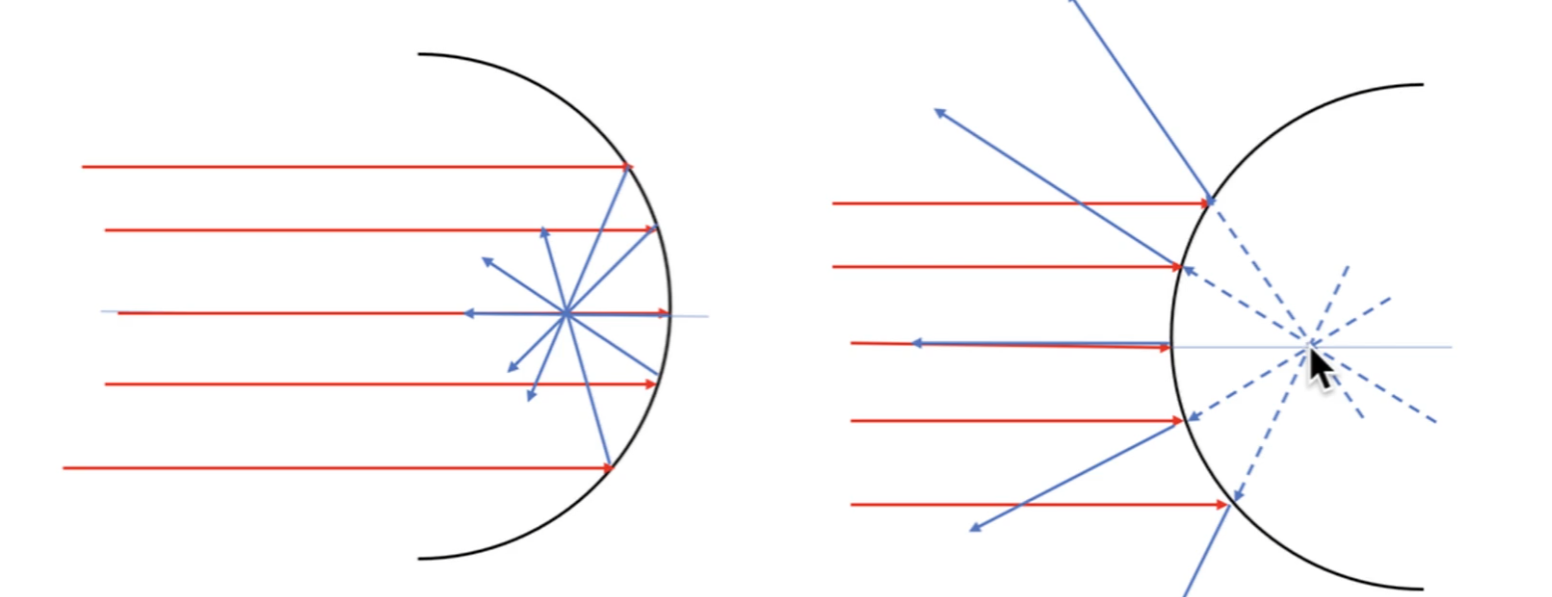In the case of a reflection, if all rays intersect at a point as if it were a real image, it’s called a virtual image. In the case where light actually does appear from some point on which rays appear to converge, it’s considered a real image.
To define a few things:
- the optical axis is a line about which a mirror is symmetric
- the centre of curvature C is the centre of a circle
- the radius of curvature R is the radius of a circle
In the case of a concave mirror, all rays parallel to the optical axis intersect at the same point, with distance from intersection point being defined by the following: For small angles, is approximately .
For convex mirrors, the geometry is similar but rays parallel to the axis reflect as if they come from the focal point, on the opposite side of the mirror.
That point of note in both cases is called the focal point, noted . Arbitrarily, is defined positive for concave mirrors, and defined negative for convex mirrors. The sign for the radius of curvature follows that of the focal point.

Rays going through the centre of curvature are reflected back the same way they came, and rays hitting the mirrors on the axis are reflected symmetrically about the axis(as expected).
Table
| Direction of Ray | Concave Mirror | Convex Mirror |
|---|---|---|
| Parallel to axis | Passes through focal point | Appears to come from focal point |
| Directed toward center of curvature | Reflects back along original path | Reflects back along original path |
| Directed to where optical axis meets mirror | Reflected symmetrically | Reflected symmetrically |
Formulaic Definitions
- is an object’s distance to a mirror
- is the distance of the image from the mirror The ratio of the image to object heights is given simply by , the relationship between and is given by , and the magnification is given by In order to properly apply these, a few mathematical assumptions must be made:
- The distance to the object is positive
- The focal length of concave mirrors is positive
- The focal length of convex mirrors is negative
- The distance to a real image is positive
- The distance to a virtual image is negative When the ratio of is negative, is positive, and the image is upright. When the ratio of is positive, is negative, and the image is inverted.